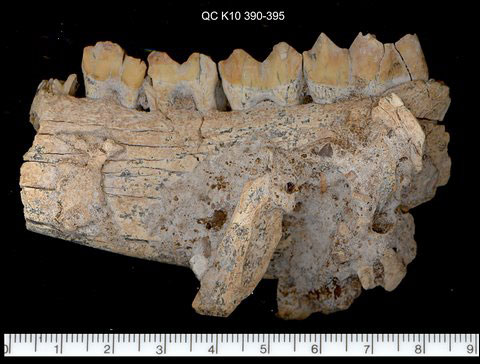Did late Lower Paleolithic people hunt or were they scavengers? A University of Arizona anthropologist says that humans living at a Paleolithic cave site (Qesem Cave) in central Israel between 400,000 and 250,000 years ago were as successful at big-game hunting as were later stone-age hunters at the site, but earlier humans shared meat differently.
Qesem Cave ("Qesem" means "surprise") people hunted cooperatively, then carried the highest quality body parts of their prey to the cave, where they cut the meat with stone blade cutting tools and cooked it with fire.
Treelines are not responding to global warming the way previous projections said they should, according to the first global quantitative assessment of the relationship between warming and treeline advance published in Ecology Letters.
The study tests the consensus that treelines have been globally advancing in response to the warming climate since 1900.
Even in adults born with extremely impaired sight, the brain can rewire itself to recognize sections of the retina that have been restored by gene therapy. This surprising adaptability comes a year after three blind volunteers received doses of corrective genes to selected areas of their retinas at Shands at the University of Florida medical center.
More than a year later, tiny portions of the patients' retinas that have received gene therapy have kept their restored function, as much as 1,000-fold increases for day vision and 63,000-fold for night vision.
Labels on prescription drugs tell you what researchers know about the medication, but what is left out can be important as well and researchers from the Stanford University School of Medicine think it's high time that the labeling tell you what isn't known.
Randall Stafford, MD, PhD, associate professor of medicine at the Stanford Prevention Research Center, and colleagues write in an essay in the New England Journal of Medicine that the U.S. Food and Drug Administration should require drug manufacturers to state how new medications compare with similar, existing treatments.
An insulator can now be transformed to conduct electricity by an ordinary camera flash, says a Northwestern University professor and his students who have found a new way of turning graphite oxide, a low-cost insulator made by oxidizing graphite powder, into graphene, a hotly studied material that conducts electricity. Graphene is the material du jour in studies to produce low-cost carbon-based transparent and flexible electronics.
Previous processes to reduce graphite oxide relied on toxic chemicals or high-temperature treatment. Instead of that, the Northwestern folks kept it simple, wondering if something like a camera flash could instantly heat up the graphite oxide and turn it into graphene.
A previously unknown chemical compound in the atmosphere may help explain how and when clouds are formed, say a team of researchers from the California Institute of Technology (Caltech) and the University of Copenhagen.
The discovery of so-called dihydroxyepoxides (an aerosol precursor) was originally found when a team of researchers from Caltech mounted a measuring device known as a Chemical Ionization Mass Spectrometer (CIMS) on an airplane and flew it over the forests of North America.
Professor Henrik Kjærgaard from the Department of Chemistry at the University of Copenhagen calls the new compounds a 'missing link' in the formation of clouds.
 Opioid Addicts Are Less Likely To Use Legal Opioids At The End Of Their Lives
Opioid Addicts Are Less Likely To Use Legal Opioids At The End Of Their Lives More Like Lizards: Claim That T. Rex Was As Smart As Monkeys Refuted
More Like Lizards: Claim That T. Rex Was As Smart As Monkeys Refuted Study: Caloric Restriction In Humans And Aging
Study: Caloric Restriction In Humans And Aging Science Podcast Or Perish?
Science Podcast Or Perish?









